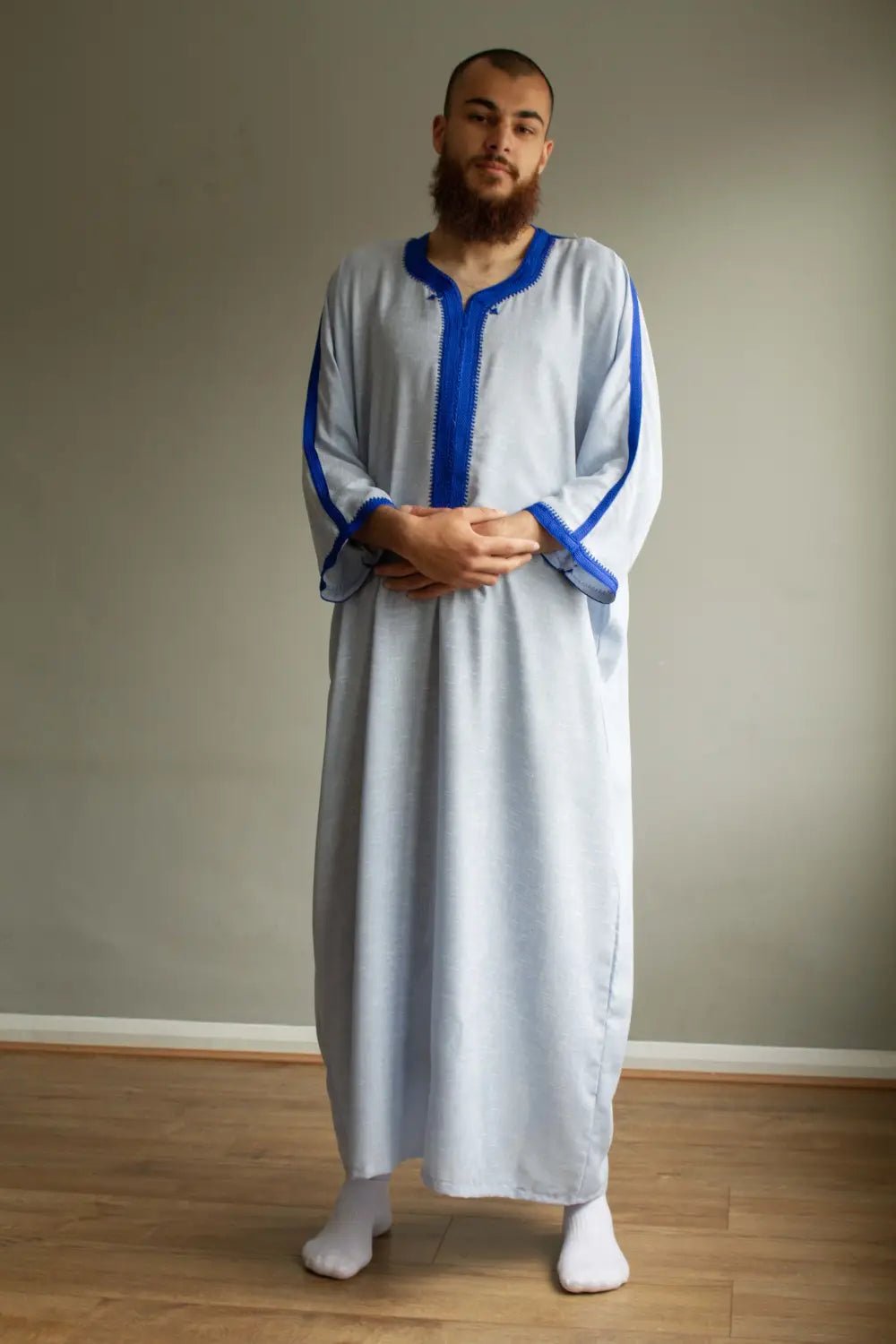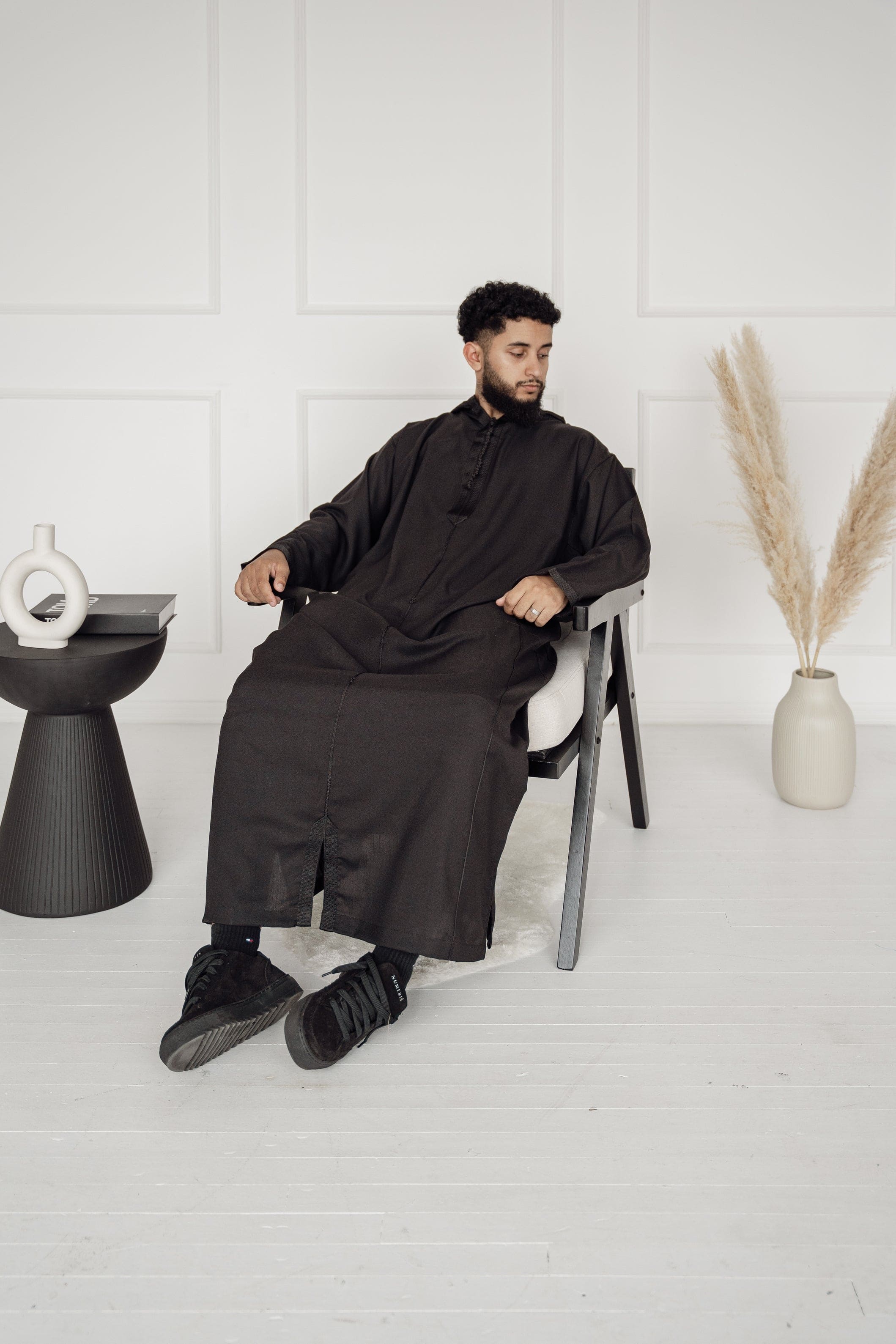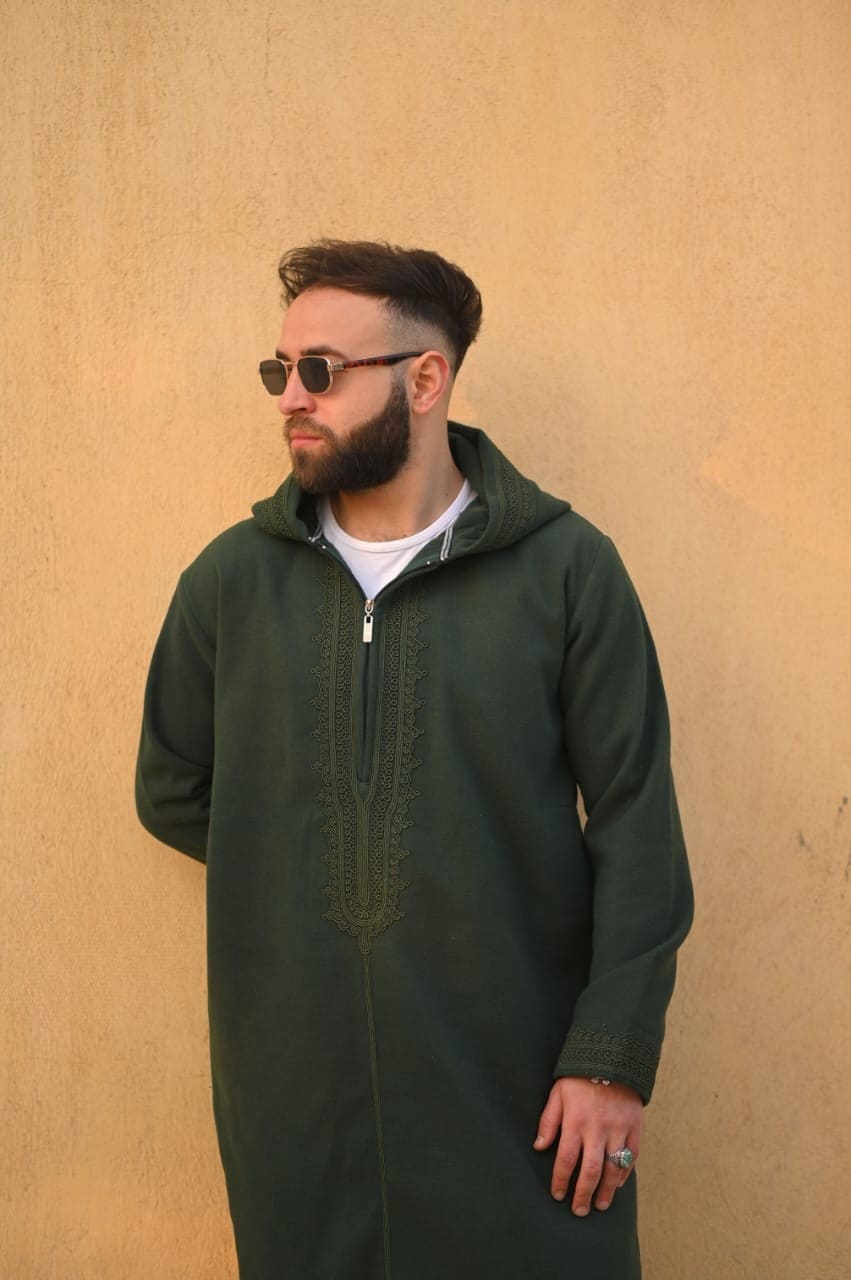The thobe is a garment that has become quite controversial nowadays. On one side we have the opinion that the thobe is a symbol of Arab identity, culture and history, divorced from the Din. On the other hand, we have the opinion that the thobe itself is a Sunnah, because there are reports that the Prophet (saw) wore it.
Before we address both arguments, one issue must be cleared up, that there is no clergy in Islam like in Christianity and that a Muslim may wear clothing of the Kuffar like pants, shirts, suits, ties etc.
The Thobe: A Sunnah of the Prophet (saw)
Indeed Islam forbids and rejects the concept of clergy. This is because all Muslims are equal, each one has been commanded to follow the Shari’ah without exception. In fact Sahih al-Bukhari 63, Book 3, Hadith 5 we found from Anas b. Malik who said:
“A man entered the mosque on a camel and made it kneel down, and then tied his leg with rope. He then asked: Who among you is Muhammad? The Messenger of Allah (saw) was sitting leaning upon something among them. We said to him: This white (man) who is leaning. The man said: O son of ‘Abd Al-Muttalib. The Prophet (saw) said; I already responded to you.”
This shows to us that the Prophet (saw) did not differentiate from the companions in terms of a specific dress or appearance because the bedouin could not distinguish between the Prophet (saw) and his companions. So the fact that Muslims in the West hold that scholars and learned men have a specific dress, namely the white Saudi thobe and a red shemagh, this is pure falsehood and contrary to the actions of the Messenger (saw). Also Tirmidhi extracted that Anas b. Malik said:
“No person was dearer to them (the companions) than the Prophet (saw), but when they saw him they did not stand up for him because they knew that he disliked that.”
They did not even stand for the Prophet (saw) even though he is the best of all creation! This is enough evidence to prove that Islam does not allow religious dress and clergymen.
Rather all clothing that fulfils the shar’ai conditions and does not imitate the specific clothing of the Kuffar, like the priests collar, the orange kurta of the Buddhists, a shirt with the symbol of a Cross or the sickle and hammer, are allowed for the Muslims to wear. There are narrations where the Messenger (saw) himself wore Roman and Yemeni clothing. Urwa ibn al-Mughira ibn Shu'ba said that his father said:
“The Prophet (Allah bless him and give him peace) wore a Byzantine robe with narrow sleeves.”
Islam and Religious Dress
The Mushrikin of Quraysh would wear similar clothes to the Prophet (saw), turbans and waist wraps. Islam did not come to make everyone wear the same clothing, all the men wearing white and the colour of the headscarf denoting your country, but it exploited the differences we have naturally in terms of culture, clothing and food, and made it inline with the Shari’ah. Anything that fits the Shari’ah is kept while all others are discarded. This is the attitude we have with culture and Islam.
Now as for the argument that the thobe is a symbol of Arab culture, this is true for today. The crisp white thobe of the Peninsula denotes Gulf Arabs, while coloured v-necked thobes denote the North African Arabs/Amazighs, the wide-sleeved thobe signifies the Sudanese Arabs etc.
The argument that the thobe is just a clothing divorced from the Din, then this is correct and incorrect. It is incorrect because there are narrations that show the Messenger loving the thobe and it being his favourite garment. Umm Salama said:
"The apparel dearest to Allah’s Messenger (Allah bless him and give him peace) was the thobe.”
The argument is correct as the thobe referred to at the time of the Prophet (saw) is not the white ankle length robe of today. It was a shirt that reached the knee or just below, and had wide sleeves to the wrist, similar to the Subcontinent kurta. The actual people wearing the Prophetic dress (izar, rida, kurta and turban) today reside in Yemen, Somalia, Bangladesh, Pakistan and Afghanistan.
The Thobe as a Symbol of Islam in the West
All these facts aside, in today's world of antagonisation of Islam, the thobe has come to signify a man’s Islam in the West. Even if you were not a Muslim and wore a thobe, you would be considered a Muslim by Westerners.
This is a good reason to wear the thobe and makes it an Islamic one because you wear the thobe to solidify your Islamic identity in the face of the attacks Islam is facing by the West.
When wearing a thobe, your awareness of your sins increases, because you do not want people seeing a Muslim in a thobe smoking weed, free mixing with girls and doing un-Islamic things. It acts as a shield for open sinning.
Wearing the Thobe with Pride
So wear a thobe with pride and consider it a way of showing your Islam to people. It is considered an Islamic garment and if you wear it with the intention of being a Da’awah carrier and showing your excellent character to the people then may Allah reward you!
Choose one for yourself from our premium thobes. Visit our website and wear the traditional Islamic dress to fulfil the Sunnah.
Check out the latest Moroccan thobes and Emirati thobe collections at New Arabia where you will get the third one at the price of 19.19 pounds if you buy two Moroccan thobes.



